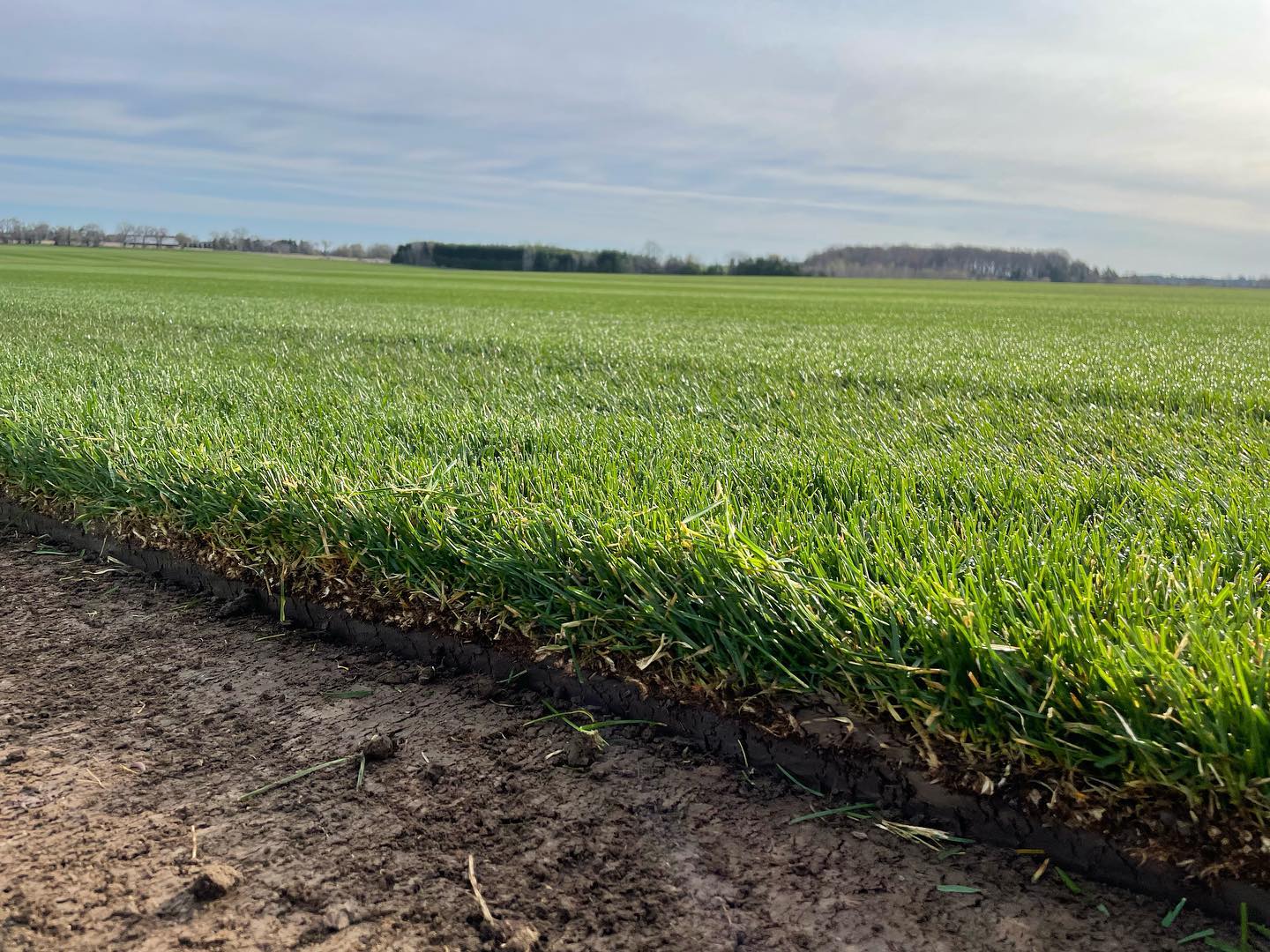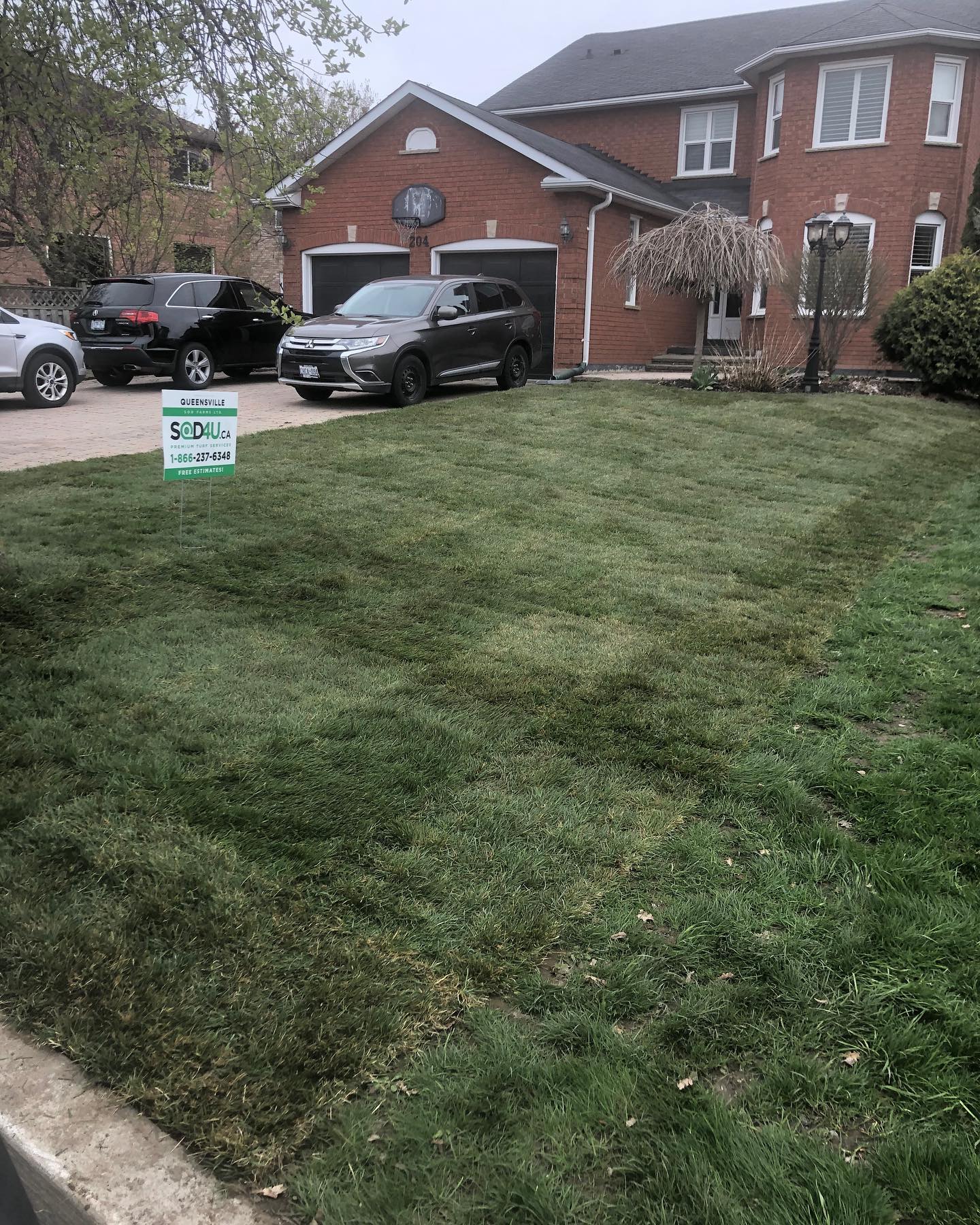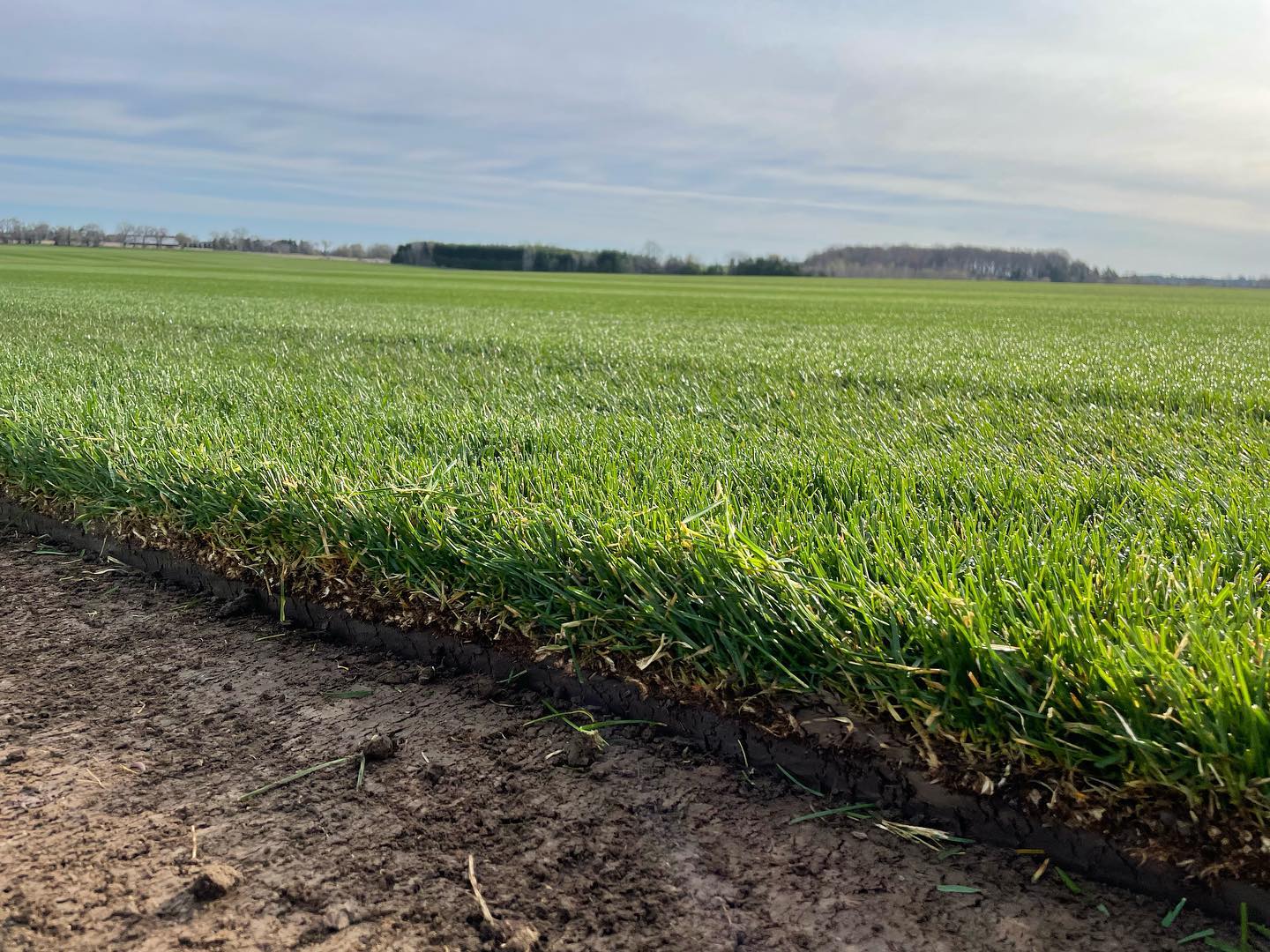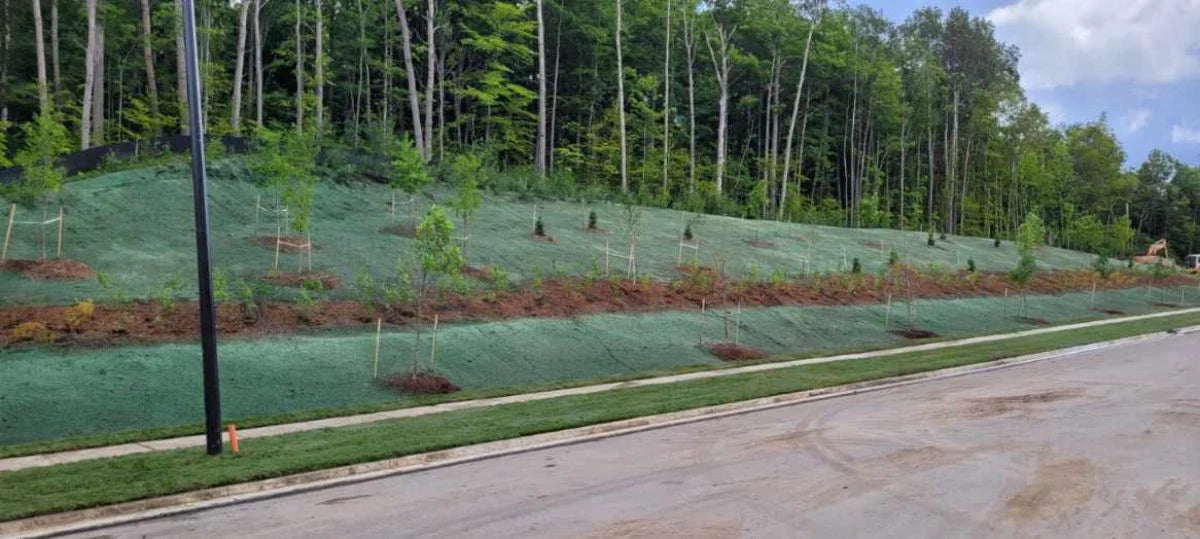Key Takeaways
- Sod gives you quick results and a fully grown yard.
- Seeds cost less, but you need to be patient while they grow.
- Consider your budget, your time, and the look you want.
- Good planning and aftercare are essential for success with both methods.
Instant lawn or long-term investment? That's the dilemma when choosing between sod vs grass seed. There's a certain satisfaction in looking out at a lush, green lawn. It's a source of pride for homeowners across the York Region. While sod delivers a mature lawn in hours, is it worth the higher price tag? Or is the budget-friendly approach of grass seed the better long-term investment? We’ll break down everything you need to know to help you make the best decision for your lawn.
What is Sod?
One common question homeowners ask is: is sod real grass? The answer is yes! Sod is real, pre-grown grass that's harvested, giving you an instant lawn; It is not artificial in any way. It is collected in easy-to-handle rolls or pieces, which makes it simple to carry and install.

What is Turf Seed?
You might hear the terms turf seed vs grass seed used interchangeably. While the terms are similar, turf seed usually refers to a blend, while grass seed can be a single variety or a mix.
Turf seed is a mix of different varieties, often blended for specific benefits like drought tolerance or shade resistance. These mixes usually contain types of grass such as Kentucky bluegrass, which gives your yard a lush green look; perennial ryegrass, which grows quickly; and fescue, which can survive in dry conditions. Knowing the different kinds of grass seeds in your mix is important for growing a healthy lawn in your area.

Pros and Cons of Sod
Pros
Sod has many benefits, making it a great option for people who want a quick and easy answer. Let's take a better look at why sod is so attractive:
-
Quick Lawn Makeover: Turn your bare yard into a green space in just one day. You won't have to wait weeks or months for seeds to sprout and grow.
-
Erosion Control: Sod quickly holds the dirt in place, stopping erosion and water runoff. This is especially helpful on hills or in newly landscaped areas.
-
Reduced Weed Issues: Since sod is already grown, it is less likely to have weeds than new grass seeds. This means less cleanup in the beginning.
-
Uniform Appearance: Sod gives your home a neat and professional look right away, boosting its outdoor appeal.
- Quick Enjoyment: You can usually start using your new sod lawn sooner than a planted lawn so that you can enjoy your outdoor area more quickly.
Cons
While sod has many advantages, it's important to think about the possible downsides before deciding. Here are some main disadvantages of sod:
-
Higher Upfront Cost: Sod is more expensive than seed, which is its biggest drawback. You're paying for the ease of having a lawn right away.
-
Requires Careful Watering and Establishment: Sod needs consistent moisture so that the roots can settle in. If you don't water it properly, the grass can dry out and won't grow well.
-
Can Be Susceptible to Disease: If not properly cared for, sod can be susceptible to different lawn diseases. Proper watering, fertilization, and maintenance are important.
- Limited Variety Selection: There are usually fewer types of grass available in sod compared to what you can find in seed. If you have a specific type of grass in mind, seeds may provide more choices.
Pros and Cons of Seed
Pros
Planting grass seed has many benefits, especially for homeowners on a budget and those who like growing a yard from scratch. Here are the perks of selecting seeds:
-
Lower Upfront Cost: Seed is more affordable than sod, making it a budget-friendly choice for starting a lawn.
-
Wider Variety of Grass Types Available: There is a bigger selection of grass seed vs sod. This lets you pick the best grass for your climate, soil, and look you want.
- Stronger Root System Development Over Time: Grass that grows from seed builds a deeper and larger root system as time passes. This makes it tougher against weather, diseases, and other environmental challenges.
Cons
Starting a lawn from seed has many advantages, but it's important to understand the difficulties that come with it. Here are some of the drawbacks to think about:
-
Takes Longer to Establish: It takes time to grow plants from seeds, so patience is important. It can take weeks or even months for grass to grow and become a lush lawn.
-
More Vulnerable During Establishment: Newly planted seeds are more vulnerable to weeds, soil erosion, and bad weather. Regular care is important during this sensitive time.
- Requires More Consistent Care During the Early Stages: To grow healthy, a new lawn needs extensive care initially, including regular watering and proper fertilization.

Differences Sod vs. Seed
|
Feature |
Sod |
Seed |
|
Cost |
Higher |
Lower |
|
Time to Establish |
Immediate |
Weeks to Months |
|
Weed Control |
Good initially |
Requires more effort during growth |
|
Variety |
Limited |
Wide selection |
|
Maintenance |
High initially, then less |
Consistent care during establishment |
|
Erosion Control |
Excellent |
Less effective initially |
How to Choose Sod or Seed?
Choosing between sod vs grass seed depends on what you need and prefer. There isn't a single answer that works for everyone; the best option relies on how you measure a few important factors. Let's look at these elements to help you choose what to use for your dream lawn:
-
Budget: One of the most important considerations in the sod vs grass seed discussion is cost. Seed is usually cheaper, especially for larger areas. If you have a limited income, seed could be the better option.
-
Timeline: Do you want a nice lawn right away? Sod gives fast results, changing your yard in just one day. If you're planning an event soon or just want to enjoy your outdoor area, sod is the best choice. If you're patient, using seeds is a cheaper way to grow grass over the long run.
-
Aesthetic Goals: What do you want your lawn to look like? Sod gives an even and neat appearance immediately. Seed lets you customize things more. You can select certain types of grass to get a specific pattern, colour, or ability to withstand dry conditions. Consider your preferred aesthetic when weighing sod vs. grass seed.
-
Climate and Location: Some grass types grow better in certain areas. Some are better suited for hot, dry conditions, while others prefer shade or cooler weather. In the York Region, a combination of Kentucky Bluegrass, perennial ryegrass, and fine fescue is used. This mixture offers a nice balance of looks, strength, and ease of care.
- Size of Area: For big areas, seeding is usually the cheapest option. Sod can be used for any size yard, but it can get very expensive for large areas. Think about how big your lawn is when deciding between sod vs. grass seed.
Conclusion
Deciding whether to use sod vs seed is an important choice for creating your dream yard. We've learned that sod gives you a quick, green yard, but it costs more at the start. Seed is the cheaper choice and comes in many different types of grass. However, it needs time and regular attention to grow well.
Ready to transform your yard into the envy of the neighbourhood? Queensville Sod is here to help. Our team offers personalized advice on sod vs. seed, and we can handle the installation process. Contact us today for a free consultation, and let's create the lush, green lawn you've always dreamed of!
FAQs
What Is The Difference Between Hydroseeding Vs Seeding?
The key difference between hydroseeding vs seeding lies in how the grass seed is applied:
- Traditional seeding means spreading grass seed straight onto ready soil, using either a hand-held or machine spreader.
- Hydroseeding is the process of mixing grass seeds with soil, fertilizer, and water to form a wet mixture. The mixture is then sprayed onto the soil with special tools.
When Is The Best Time To Seed A Lawn?
Fall is the best time to plant cool-season grasses, and late spring or early summer is best for warm-season grasses. Local climate and soil temperature are very important, so it's best to ask local experts for specific help.
How Long Does It Take For Grass Seed To Start Sprouting?
You can usually see sprouts in 5-10 days for quick-germinating grasses like perennial ryegrass. Slower types, like Kentucky bluegrass, may take 10-20 days or more.
How Soon Can I Stand On Sod?
Wait at least two weeks, or longer if possible, before going on newly installed sod so the roots can grow properly. You can check if it's ready by gently pulling on a corner. If it pushes back, it’s probably set for light use. Stay away from heavy activities until the grass has taken root fully.





